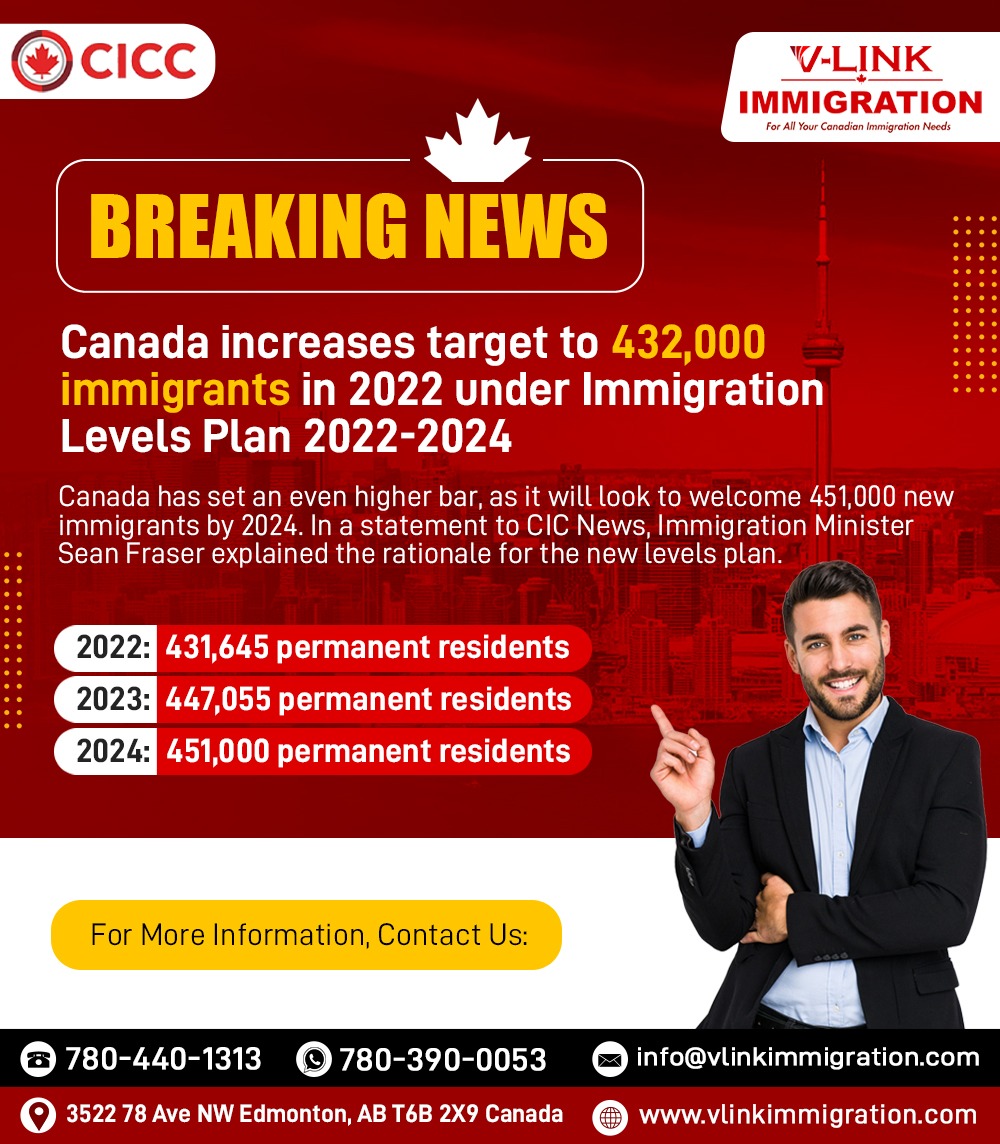Canada increases immigrants under Immigration Levels Plan 2022-2024: The Canadian government is increasing its immigration targets again. It will look almost 432,000 new immigrants in 2022 instead of its initial plan to target 411,000 newcomers.
Government suggested three year plan for new immigrant landings under immigration Levels Plan 2022-2024.
In 2022, the government plans to welcome 431,645 permanent residents. In 2023, the target goal for permanent residents will increase to 447,055 and then 451,000 permanent residents in 2024.
Immigrants under Immigration Levels Plan 2022-2024
The highlights include
- On the whole, admissions will account for 1.14% of the Canadian population by 2024.
- Long-term focus on the Canada’s economic growth allows 60% of new immigrants in Canada through Economic Class.
- Special protocols for granting permanent residence to refugee claimants working in health care sectors, especially during the Covid-19.
- Support for global crises by providing a healthy environment through humanitarian immigration
- Talent acquisition of those already in Canada by granting permanent residency status to temporary residents migrated through the time-limited pathways for essential workers.
- Recognizing the importance of family reunification helps maintain the 12-month processing standard for spouses and children.

Immigrants through Immigration Pathways
Approximately 56 percent of new immigrants will arrive under economic class pathways such as:
- Express Entry
- Provincial Nominee Program
- Temporary to Permanent Residence (TR2PR) stream
The Provincial Nominee Program will be the main admissions program for economic class immigrants with Immigration, Refugees and Citizenship Canada (IRCC) looking to immigrate 83,500 newcomers via the Provincial Nominee Program in this year.
IRCC has cut Express Entry admissions in half for 2022 but aims to return to normal Express Entry admissions levels by 2024 when it targets the arrival of 111,500 Express Entry immigrants .
IRCC is looking to immigrate 40,000 immigrants in Canada this year (2022) and the final 32,000 immigrants by 2023 under the Temporary to Permanent Residence stream.
The details of the admissions under immigration class pathways:
| Immigration Class | 2022 | 2023 | 2024 |
| Economic | 241,850 | 253,00 | 267,750 |
| Family | 105,000 | 109,500 | 113,000 |
| Refugee | 76,545 | 74,055 | 62,500 |
| Humanitarian | 8,250 | 10,500 | 7,750 |
| Total | 431,645 | 447,055 | 451,000 |
Canada has one of the world’s oldest populations and also one of the world’s lowest birth rates. This creates economic and fiscal pressures. Canada needs higher levels of immigration to support its population, labour force, and economic growth, as well as to have enough workers to pay the taxes necessary to support important social services such as education and health care . Low economic growth makes it difficult for Canada to raise the taxes it needs to support social spending on services such as education, health care, and other important areas that provide high living standards in the country.




